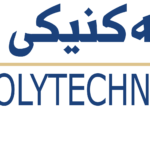- Amanj Jamal Azeez
- [email protected]
- 0750 430 4363
- FINAL AMANJ THESIS RECOVERY 99
-
SUMMARY
The current study aimed to investigate the impact of a static magnetic field (SMF) exposure on uropathogenic Escherichia coli colony morphology, cell growth, viability, biochemical characteristics, antibiotic susceptibility and gene expression from urine clinical specimens.
Twenty- five E.coli is being isolated clinical samples obtained from urine of patients attended to different hospitals (Erbil, Rizgary, and Rapareen Teaching Hospital in Erbil city/Iraq. All isolates were identified using cultural, morphological, biochemical characteristics, and the using Vitek 2 system for identification.
The magnetic field created manually with the power of (0.04, 0.08, 0.12, 0.16T) and have been measured the force in the Physics Department of the College of Education at the University of Salahaddin in Erbil/ Iraq. The bacterial culture in broth media exposed to different force of magnetic field.
Our findings revealed that exposure to SMF (0.04, 0.08, 0.12, 0.16T) decreased optical density at 620 nm over the course of 24 hours. Also finding exposed bacteria to different magnetic force been altered bacterial biological activity on sugar fermentation and antibiotic sensitivity due to mutation.
In addition, the Vitek 2 system has been used for measuring the antibiotic susceptibility of bacteria against different magnetic fields. After 24 hours of exposure, the minimum inhibitory concentration (MIC) value was calculated. The antibiotics Ciprofloxacin, Trimethoprim/sulfamethoxazole, Ceftazidime, Cefepime and Aztreonam converted from sensitive to resistant compared with negative control (unexposed).
Escherichia coli isolates were put through a PCR procedure using the appropriate primer 16SrRNA to establish their identity as well as other primers TEM1.CTXM-1 SHV genes that encode for a multidrug-resistant strain MDR.
The interpretation of the differential expression of the TEM1.CTXM-1, SHV, and 16SrRNA genes under different SMF exposure revealed that the expression level of the 16SrRNA amplification PCR product remained constant throughout the exposure and thus can be used as a reference gene for the observation of the differential gene expression of E. coli. Notably, the amplified PCR products of TEM1.CTXM-1, and SHV genes were decreased after different SMF exposure as compared to non-exposed (control) that’s lead to increase antibiotic susceptibility. The TEM1.CTXM-1 genes were subjected to a genomic study; (Bio Edit V.7.0.5) was used to evaluate the quality of their sequencing data. Utilizing NCBI- BLAST, homology, insertions - deletions, stop codons, and frame shifts were investigated. Laboratory or query sequences were examined and aligned with a second biological sequence to identify a greater degree of similarity and nucleotide variation with other targets.
- Erbil Technical Health College
- Medical Laboratory Technology Department
- Microbiology


